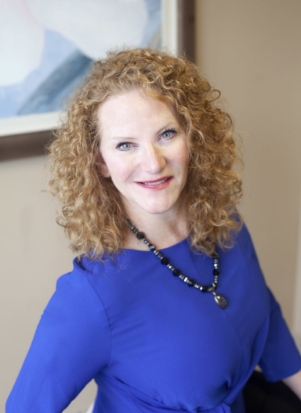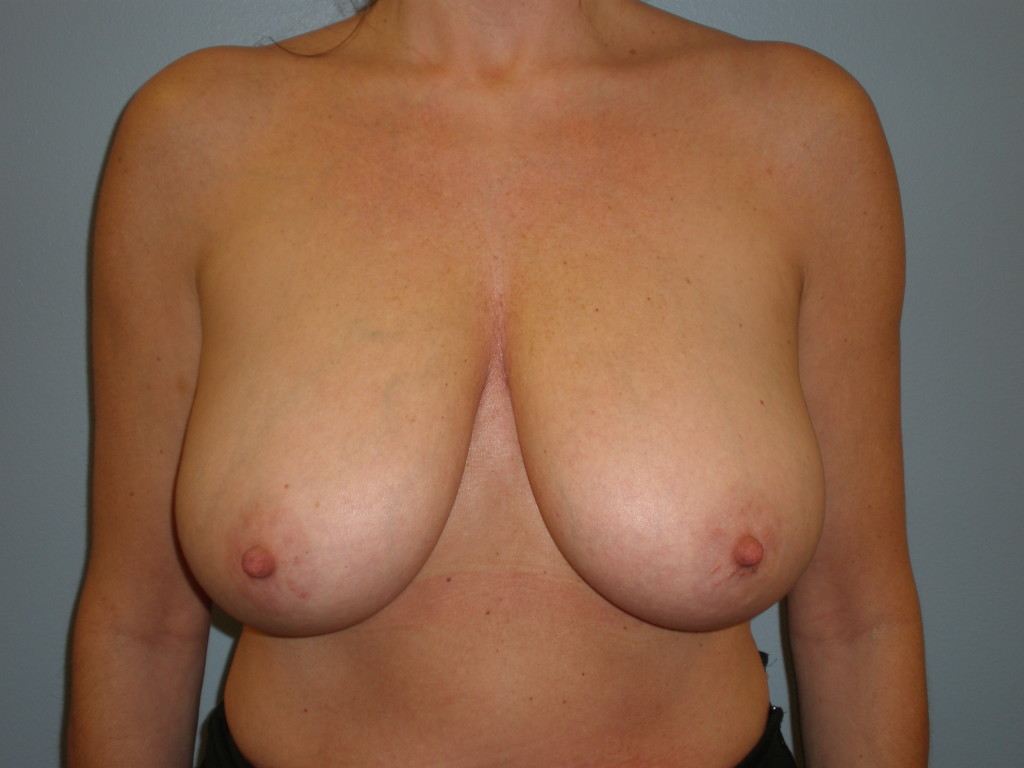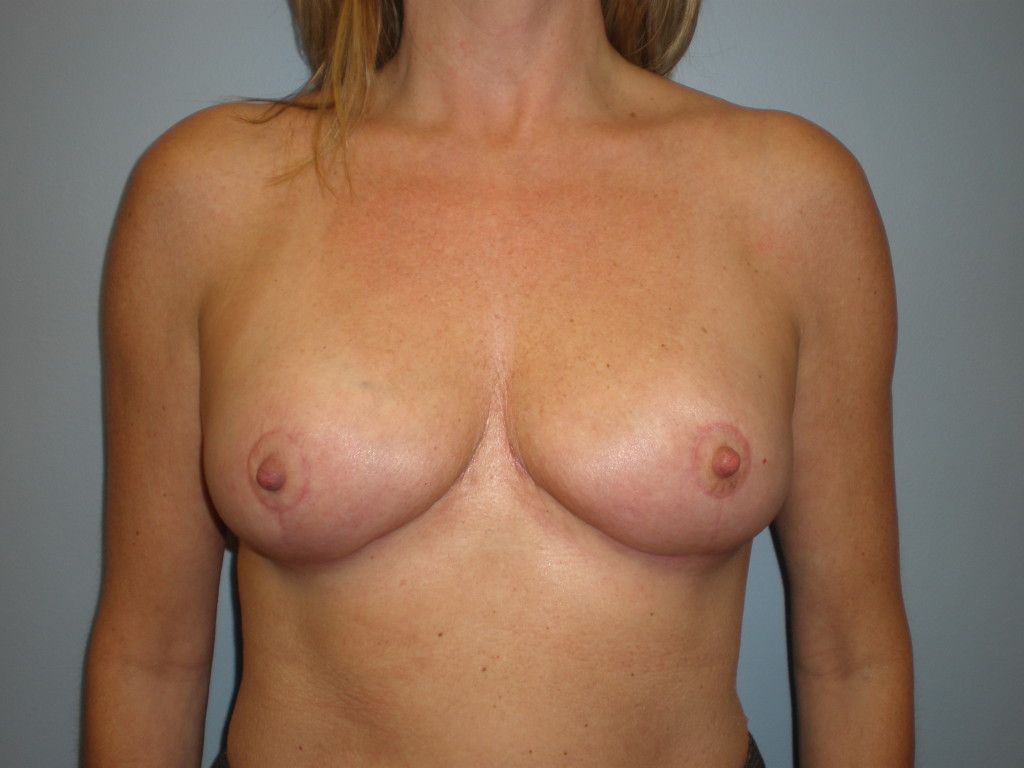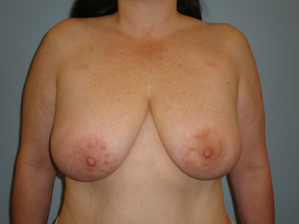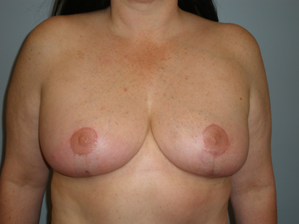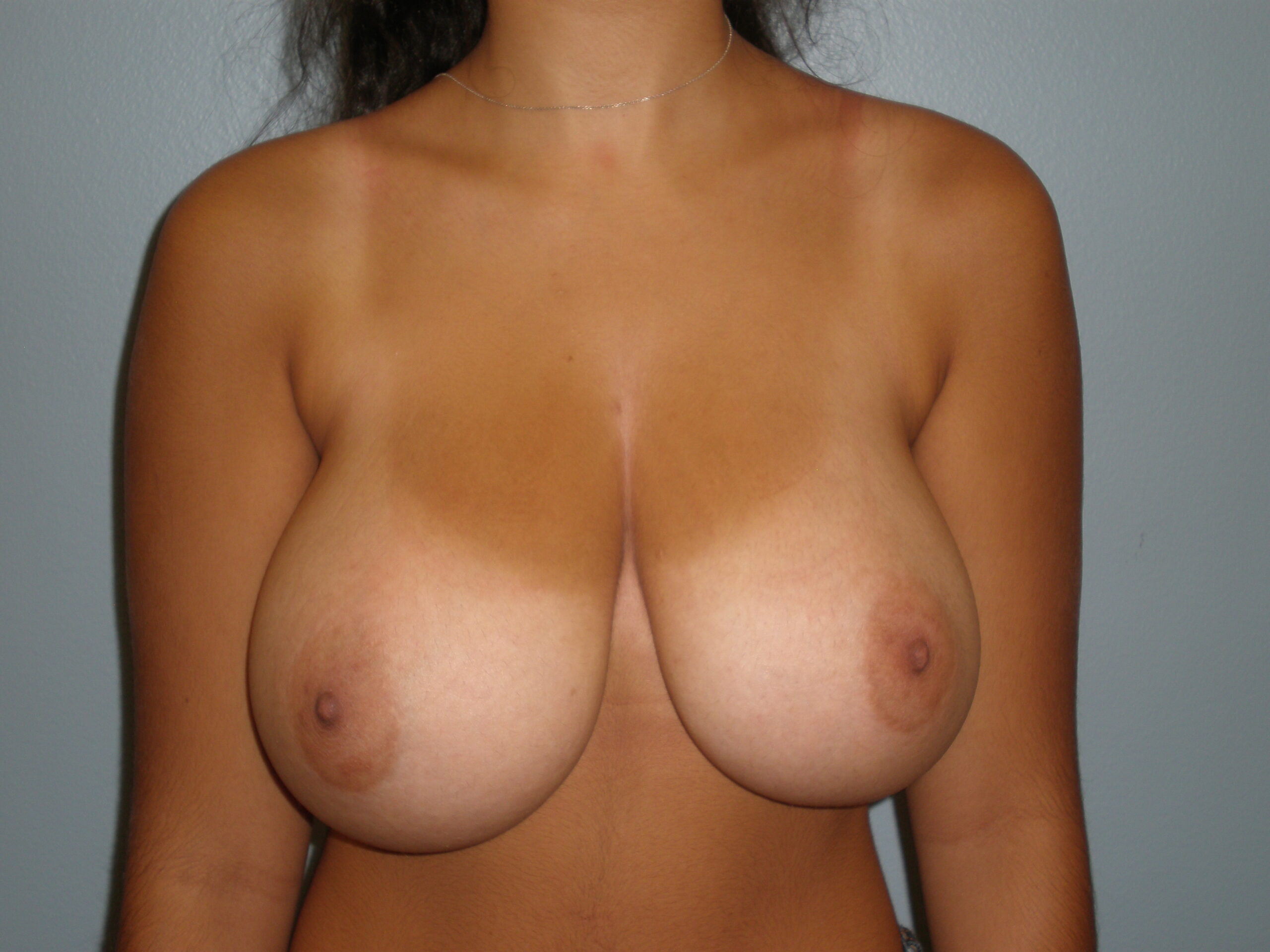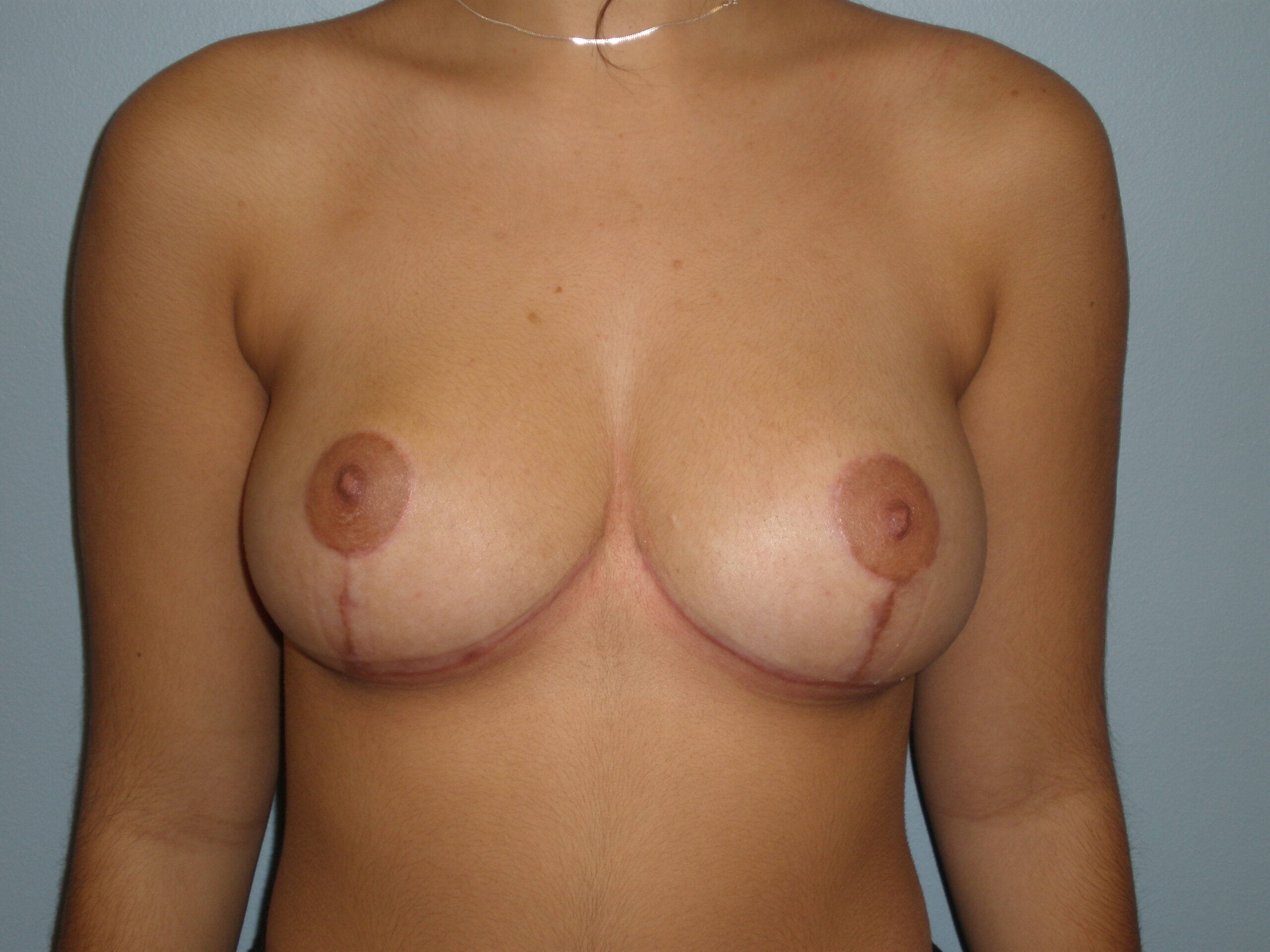What is a Breast Reduction?
Breast reduction surgery, also known as reduction mammoplasty, is a breast surgery done to remove excess breast tissue, fat, and skin on the breast for a more proportionate figure. This procedure can also alleviate the discomfort that overly large breasts can cause, such as back and neck pain, skin irritation, and breathing problems.
Trusted & Experienced
all female staff
“Dr. Rocheford and her team are the best of the best. The results of my breast lift and reduction surgery are better than I ever hoped. I love how I look, the way clothes fit, and freedom from the weight and strain on my upper body that I lived with way too long. Every detail from pre-op, to surgery day to post op care went smoothly. Any questions I had along the way were answered promptly. I felt safe, well cared for and that I was valued, listened to and the entire team was working to see that I had a good outcome. Dr. Rocheford succeeded brilliantly in giving me that good outcome. My life is better, from both a physical and emotional standpoint. I highly recommend Dr. Rocheford as a plastic surgeon, but also for the excellence of every aspect of her practice.”
“I had searched and consulted with a few other plastic surgeons before I found Dr. Rocheford. I was really surprised that she met with me in-person for my consultation. She’s skilled and knowledgeable at her work. I didn’t hesitate to have her perform my tummy tuck surgery. I’m a super anxious person and Dr. Rocheford responded to all of my text messages day and night – weekdays and weekends. She’s the best choice in my opinion and her work is exceptional in quality.”
Read More Reviews
Heather Rocheford, MD
BOARD CERTIFIED PLASTIC SURGEON
There are so many fads and false promises out there. It’s almost impossible to make a confident decision without trusted advice, and that’s what I’m here for. My goal is to help you understand what is right for you – based on your unique situation.
Meet Dr. Rocheford
Details of Breast Reduction Surgery
- Surgery: Surgery is done under general anesthetic at an outpatient facility or hospital. The surgery takes between 3 – 4 hours and is an outpatient or overnight stay surgery.
- Discomfort: Mild to Moderate. Anticipate 2 – 7 days of pain medication.
- Bruising and Swelling: Improves in 7 – 10 days.
- Bandages: Removed the day after surgery.
- Stitches: Internal stitches dissolve.
- Work: Wear a sports bra full time for 2 weeks and during the day for the next 4 weeks.
- Exercise: May be resumed in 2 weeks.
- Final Result: Following scar maturation, about 6 months. Results last 7 – 10 years.
Who is a Good Candidate for a Breast Reduction?
Good candidates for breast reduction surgery are healthy, non-smokers who are dealing with excessively large breasts and want a reduction in breast size. Also, if your breast weight or breast volume is limiting your physical activity, or causing physical symptoms such as neck and shoulder pain, or are causing shoulder indentations from your bra straps, you may be able to benefit from a reduction mammaplasty. A consultation with Dr. Rocheford can allow further discussion on whether you are a good candidate for breast reduction. During a consultation we will review your medical history, previous breast surgery procedures (if any), and aesthetic goals.
The Reduction Mammoplasty Breast Surgery
Breast reduction surgery is done under general anesthesia and takes between three and four hours to complete depending on the surgical techniques used. The surgery begins by marking where the nipple and areolar complex should be. Dr. Rocheford uses the anchor incision pattern, which involves an incision around the areola, down to the breast crease, and along the breast crease. The nipple and areolar complex will remain attached to the breast tissue. Once the excess tissue and skin are removed, the remaining breast will be placed into the smaller skin envelope. All the incisions will be closed with dissolving sutures underneath the skin.
A breast reduction is done by first marking where the nipple and areolar complex should be. This is at the level of the crease under your breast. The anchor-type pattern is then marked for the breast reconstruction. All the areas shaded in green indicate where skin and glandular tissue will be removed to lift the breast and make it smaller. The nipple and areolar complex will remain attached to the breast tissue. Once the excess tissue and skin are removed, the remaining breast will be placed into the smaller skin envelope. All the incisions will be closed with dissolving sutures underneath the skin.
Breast Reduction Recovery
Following surgery, patients may experience mild to moderate bruising and swelling, which should resolve within a week. Any discomfort can be controlled with pain medication. Patients should wear a sports bra full-time for up to four weeks. Physical activity can be resumed after two weeks, with final results apparent at six months.
Schedule a Consultation
Women from the Twin Cities and Western Wisconsin who have a breast reduction at Dr. Heather Rocheford’s plastic surgery office often say it’s the best decision they ever made, and they wonder why they waited so long to have the procedure. You don’t have to wait any longer. Start your breast reduction process now by scheduling a consultation with Dr. Heather Rocheford at our plastic surgery offices. Call Rocheford Plastic Surgery at 651-739-1100 today to schedule your appointment.
Recent News
Do I Need a Breast Lift or a Breast Reduction?
Your breasts can play a pivotal role in how you feel about your appearance – especially once you take your…
READ MORE
Health Benefits of a Breast Reduction
When it comes to popular surgical procedures for breasts, many people immediately think of breast augmentation – the procedure that’s…
READ MORE
Breast Reduction FAQ’s
Does breast reduction affect breastfeeding?
Breast reductions should not impact your ability to breastfeed. The nipple is treated carefully during the procedures to avoid complications with breastfeeding. Regardless of this, Dr. Rocheford may recommend waiting as an extra precaution.
Do you lose weight with a breast reduction?
Depending on the size of your breasts, reductions could lead to weight loss. However, this loss is likely only a few pounds and is not a plausible weight loss procedure.
Do you lose feeling in your nipples after breast reduction?
Some loss in nipple sensitivity is common following breast reduction surgery, however, this is most often temporary.
Do you lose weight after breast reduction?
Some women find the relief of having a more manageable breast size to be encouraging to establishing an exercise routine they werent capable of prior to surgery. However, the procedure itself is not a weight-loss solution.
How can I reduce my cup size?
If youre interested in lowering your bra cup size, the most effective solution will likely be breast reduction surgery.
What is Breast Reduction?
Also known as reduction mammaplasty, breast reduction surgery in Minneapolis-St. Paul removes excess breast fat, glandular tissue and skin to achieve a breast size in proportion with your body and to alleviate the discomfort associated with overly large breasts. Overly large breasts can cause some women to have both health and emotional problems. In addition to self-image issues, you may also experience physical pain and discomfort. The weight of excess breast tissue can impair your ability to lead an active life. The emotional discomfort and self-consciousness often associated with having large pendulous breasts is as important an issue to many women as physical discomfort and pain.
At what age should you get a breast reduction?
There is no perfect age for breast reduction. Depending on the reason for the reduction, patients can be as young as teenagers or in their senior years. Ideal candidates may vary in age, but the one similarity is their good health.
When can I wear my bra after a breast reduction?
For the first several weeks following surgery, Dr. Rocheford will give you a special bra to wear during the day and at night. This bra will help the healing process, ensuring the breasts heal correctly. Approximately at six weeks, you can sleep without this bra, and return to wearing your normal bra during the day.
Can you drink alcohol after breast reduction?
Dr. Rocheford recommends refraining from having alcoholic beverages for at least a week, and sometimes longer after breast reduction.
How do I know if I need a breast reduction?
If you are unhappy with the largeness of your breasts, have experienced back and shoulder pain, or notice chaffing around the breasts, you could be a good candidate for breast reduction surgery. Schedule a consultation with Dr. Rocheford to confirm your candidacy.
What are the risks of breast reduction surgery?
The risks of breast reduction and breast reduction complications include, but are not limited to, unfavorable scarring, infection, changes in nipple or breast sensation - which may be temporary or permanent - anesthesia risks, bleeding (hematoma), blood clots, and the possibility of revision surgery
What results can I expect from breast reduction?
The results of breast reduction surgery will be long-lasting. Your new breast size should help relieve you from the pain and physical limitations experienced prior to breast reduction. Your better-proportioned figure will likely enhance your self-image and boost your self-confidence. However, over time your breasts can change due to aging, weight fluctuations, hormonal factors, and gravity.
How long is breast reduction recovery?
Every patient is different, but we encourage at least a 7-day rest period before returning to work. After returning to work, it is important to take it easy and avoid strenuous exercise for as long as Dr. Rocheford recommends. If your job is physically intensive, you will need to take off more than seven days. Again, the exact amount of rest needed will be determined by Dr. Rocheford.
Can breast grow back after reduction?
Tissue removed during breast reduction surgery does not return. However, breasts may become larger due to weight gain following the procedure, proportional to the rest of the body.
How long does it take to recover from a breast reduction?
Recovery from breast reduction can take anywhere from two to six weeks.
What You Should Know Before Your Breast Reduction Procedure?
The success and safety of your Minneapolis-St. Paul breast reduction procedure depends very much on your complete candidness during your consultation. You'll be asked a number of questions about your health, desires, and lifestyle. Be prepared to discuss why you want the surgery, your expectations, and desired outcome, medical conditions, drug allergies, use of current medications, vitamins, herbal supplements, alcohol, tobacco, and drugs, previous surgeries, and family history of breast cancer.
What are the steps of a breast reduction procedure?
The technique used to reduce the size of your breasts will be determined by your individual condition, breast composition, amount of reduction desired, your personal preferences, and Dr. Rocheford's advice. Medications are administered for your comfort during breast reduction surgery. The choices include intravenous sedation and general anesthesia. After the incision is made, the nipple is repositioned. The areola is reduced by excising skin at the perimeter, if necessary. Underlying breast tissue is reduced, lifted, and shaped. Occasionally, for extremely large breasts, the nipple and areola may need to be removed and transplanted to a higher position on the breast (free nipple graft). Sutures will be layered deep within the breast tissue to create and support the newly shaped breasts. Incision lines are permanent, but in most cases will fade and significantly improve over time.
What is the recovery time for breast reduction?
You will be given specific instructions for breast reduction recovery that may include how to care for your breasts following breast reduction surgery, medications to apply or take orally to aid healing and reduce the risk of infection, specific concerns to look for at the surgical site or in your general health, and when to follow up with Dr. Rocheford.
Is breast reduction right for me?
Breast reduction surgery is a highly individualized procedure and you should do it for yourself, not to fulfill someone else's desires or to try to fit any sort of ideal image. Breast reduction is a good option for you if you are bothered by the feeling that your breasts are too large, your breasts limit your physical activity, you experience back, neck, and shoulder pain caused by the weight of your breasts, you have regular indentations from bra straps that support heavy, pendulous breasts, or you have enlarged areolas caused by stretched skin.
What questions should I ask during my breast reduction consultation?
Use these questions as a guide during your consultation: How many years of plastic surgery training have you had?nWhere and how will you perform my breast reduction procedure? Am I a good candidate for breast reduction? What will be expected of me to get the best results from breast reduction surgery? What surgical technique is recommended for me? How long of a recovery period can I expect, and what kind of help will I need during my recovery? What are the risks and complications associated with my breast reduction procedure? How are breast reduction complications handled?
What is Breast Reduction?
Also known as reduction mammaplasty, breast reduction surgery in Minneapolis-St. Paul removes excess breast fat, glandular tissue and skin to achieve a breast size in proportion with your body and to alleviate the discomfort associated with overly large breasts. Overly large breasts can cause some women to have both health and emotional problems. In addition to self-image issues, you may also experience physical pain and discomfort. The weight of excess breast tissue can impair your ability to lead an active life. The emotional discomfort and self-consciousness often associated with having large pendulous breasts is as important an issue to many women as physical discomfort and pain.
What You Should Know Before Your Breast Reduction Procedure?
The success and safety of your Minneapolis-St. Paul breast reduction procedure depends very much on your complete candidness during your consultation. You’ll be asked a number of questions about your health, desires, and lifestyle. Be prepared to discuss why you want the surgery, your expectations, and desired outcome, medical conditions, drug allergies, use of current medications, vitamins, herbal supplements, alcohol, tobacco, and drugs, previous surgeries, and family history of breast cancer.
Can breasts grow back after reduction?
Tissue removed during breast reduction surgery does not return. However, breasts may become larger due to weight gain following the procedure, proportional to the rest of the body.
Can you drink alcohol after breast reduction?
Dr. Rocheford recommends refraining from having alcoholic beverages for at least a week, and sometimes longer after breast reduction. You should not drink alcohol while you are taking any prescription pain medication or antibiotics.
